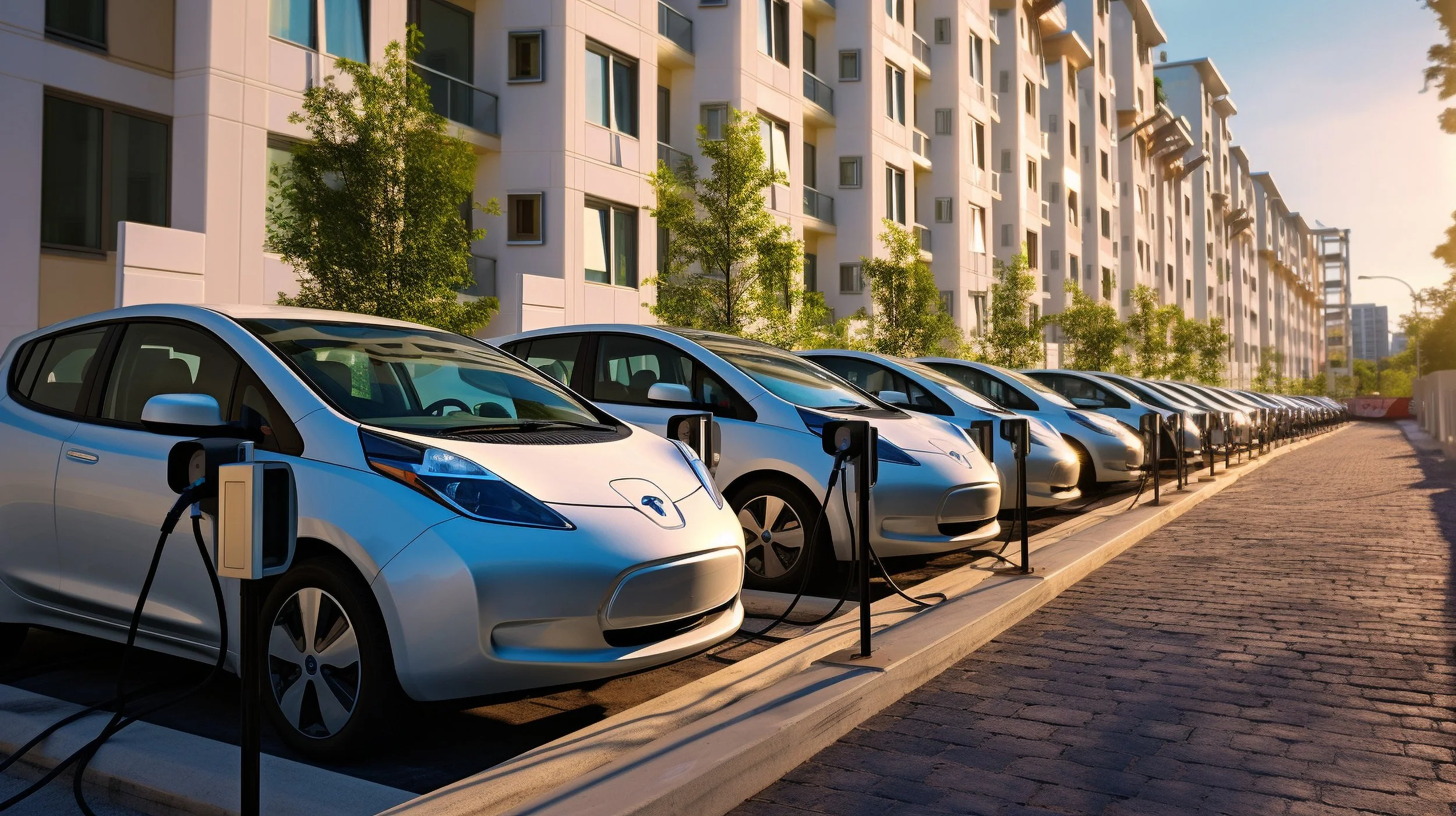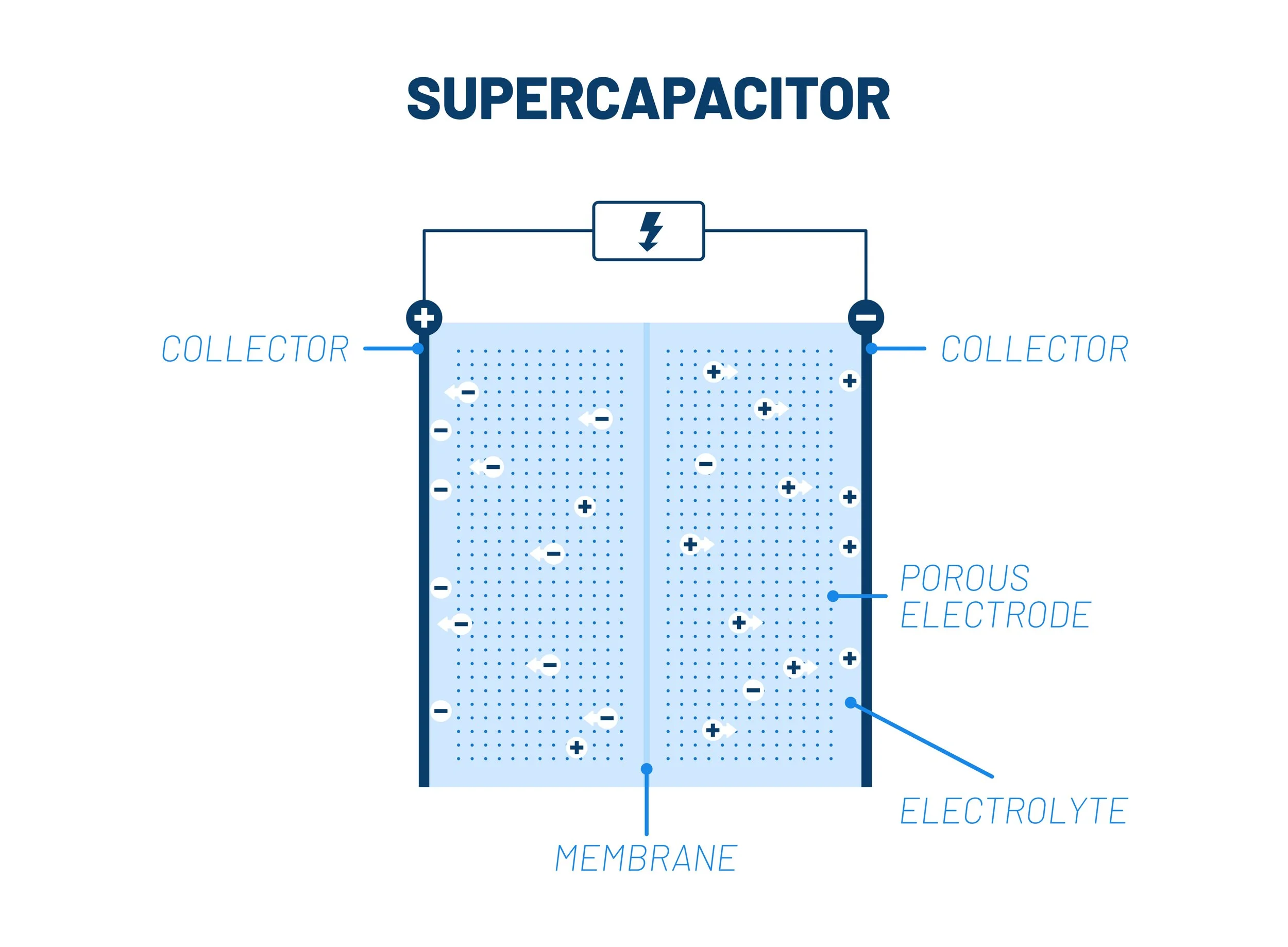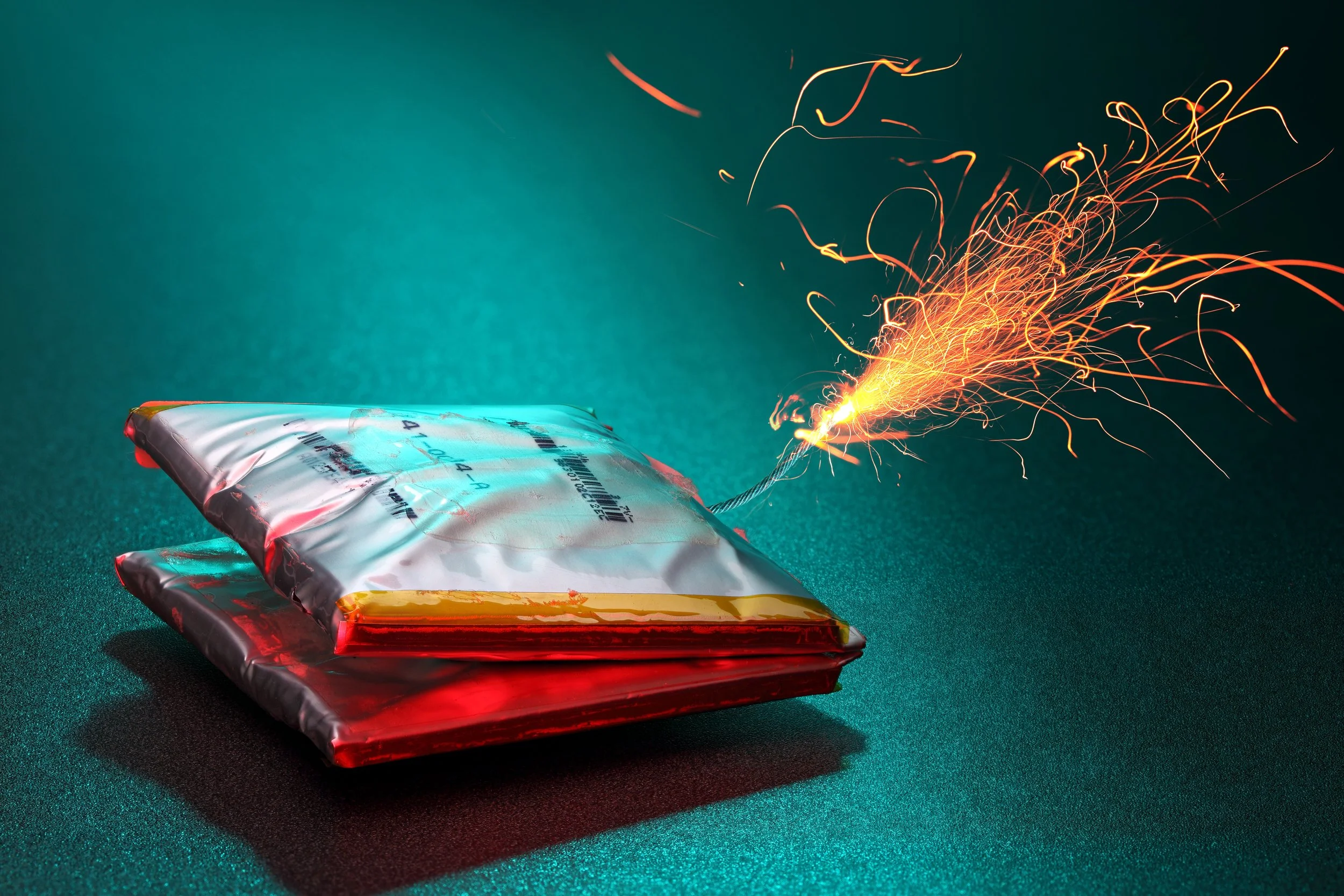Energy Storage System Safety Considerations
Batteries are the go-to solution when it comes to energy storage. However, they are not the only option. Relying on batteries alone is dangerous, not only in terms of performance but in terms of safety. Turns out, in the first half of 2023, EV Firesafe data show they accounted for more than 500 battery fires, 138 injuries and 36 deaths worldwide. Supercapacitors are another kind of energy storage technology that offer a wide array of advantages such as stable performance at low temperatures and a high-power density. As more batteries find their way into our homes, cars, and electrical grid, safety becomes more and more critical. Supercapacitors hold the key to achieving our climate goals and meeting safety standards. This is especially true in major metropolitan areas where safety is critical and space is limited for solar systems, electric vehicle chargers, microgrids, and stationary storage applications.
Are Either Batteries or Supercapacitors Safe?
The safety of any energy storage technology is highly dependent on (1) the electrolyte used inside, (2) if the energy storage device is being operated within its specifications, and (3) mechanical considerations.
Electrolyte is used to transport ions from one electrode to the other. You can skip the electrolyte, but without it, not much energy will be stored. Electrolytes used in many commercial batteries and supercapacitors are flammable and toxic. This is not to say that all batteries and supercapacitors use dangerous electrolytes, but many do.
Part of what makes Capacitech special is that we offer supercapacitors that leverage safe, non-explosive, non-toxic electrolyte. PolyJoule is another great company that offers safe alternatives too!
Like most technology, it is critical to use energy storage devices in line with the specifications. If you overcharge a battery or a supercapacitor, it is going to be damaged or worse—it could explode.
Supercapacitors have an advantage here. While they store less energy than batteries, they can deliver significantly more power. This is thanks to their low internal resistance which is why they can handle high currents without generating excessive heat. Their low resistance drives high power density and peak power capacity, making them perfect candidates for applications that require quick energy bursts like electric vehicles or renewable energy systems. Batteries, on the other hand, can produce significant heat during charging and discharging, which can lead to damaging thermal runaway.
Overcharging, or charging a device past its rated voltage, is one of the easiest ways to damage an energy storage device. This is another area that batteries have a major advantage over supercapacitors. A supercapacitor cell typically works between 0V and 2.7V, plus a surge voltage rating (just in case). A lithium-ion battery has a working voltage range between 2.5V and 4.2V. Most of its energy is stored at 3.7V. Additionally, batteries are far more sensitive than supercapacitors. In a battery, the charging profile is critical whereas in a supercapacitor the main consideration comes down to staying below the voltage rating.
Furthermore, the lifespan of supercapacitors tends to be longer than that of batteries. While batteries degrade over time, supercapacitors do not experience the same level of degradation. This means they can provide a more reliable and longer-lasting energy storage solution. That reliability leads to increased safety.
Mechanical and environmental considerations are also important and cannot be overlooked. For example, as the ambient temperature changes so will the device’s internal resistance. Furthermore, neither batteries nor supercapacitors should ever be penetrated or punctured—this is guaranteed to damage the cell and can also cause a fire unless a safe electrolyte is being used.
While neither is perfectly safe, since it really depends on the electrolyte being used inside, supercapacitors have an edge over batteries thanks to their wide operating specifications, low internal resistance, and long operating life.
Are Supercapacitors Better than Batteries?
Hard to say which is better. You can make a strong case can that supercapacitors are better in terms of safety, but batteries and supercapacitors each have their unique advantages. Batteries are best in applications where constant power is needed for long durations of time while supercapacitors are better in applications where high levels of dynamic, or fluctuating, power is needed for short durations.
Today’s power grid is evolving as the world tackles climate challenges. As more renewables are implemented and electricity demand grows, the grid will become more dynamic. Just as multiple types of power generation are required (wind, solar, hyrdo, etc…), multiple types of energy storage technologies are required too. Batteries and supercapacitors are designed to complement one another rather than compete.
In terms of safety, we would recommend safety stems from a good design and safe chemistry. A good design includes using energy storage components that are optimized for their particular use case. In many ways, that comes down to sizing batteries to meet steady state power requirements and supercapacitors for transient power requirements. This can reduce the number of energy storage devices required and therefore reducing the number of potential failures. This also protects batteries from events that damage them and can be safety hazards, like the high-power draws that a supercapacitor is better optimized to handle.
Great! So, Battery-Supercapacitor Hybrids are the Solution?
Almost. There is a challenge to hybrids: only so much space is allocated for energy storage systems. Batteries and supercapacitors tend to compete with one another for this space which forces design tradeoffs. Simply increasing the amount of space allocated also forces tradeoffs such as losing cargo space in an electric vehicle, reducing the number of solar panels that can be installed, or buying more land for an installation (which is very expensive in places like New York City, Miami, and Las Vegas). The good news is Capacitech has a suite of solutions to address this problem centered around our physically flexible energy storage technology. This cable-like system makes it possible to turn wiring infrastructure into energy storage assets and route energy storage in new places to avoid design tradeoffs. As a result, batteries and Capacitech’s supercapacitors work together as a team to deliver better performance at lower costs.
Can’t I String Batteries and Supercapacitors Together Myself?
When you first connect either batteries or supercapacitors together in series, each cell may appear to have the same voltage as the next. But over many cycles, especially at high current levels, the voltage of one cell can become different than the voltage of the next cell. This is due to imperfections at the material level and will lead to safety issues.
So, no, do not just simply connect energy storage technologies together— balancing is critical! Balancing is the act of equalizing the voltage across each individual cell in an energy storage system or module.
This is where battery management systems come into play. Battery managements systems are devices dedicated to the oversight of a set of batteries or cells; they are sophisticated and expensive, which makes sense given the complexity of battery charging and discharging requirements.
Balancing is also needed for supercapacitors. Like the battery management system, these circuits continuously monitor and adjust the voltage across each cell to ensure they are operating within safe limits. By maintaining proper voltage balance, supercapacitors can operate at their optimal performance and remain safe throughout their lifespan.
Here's the issue though: supercapacitors are used in high power applications, but most balancing circuits do not balance at high power rates. Consider an application like regenerative braking for e-mobility applications, where the supercapacitor is charging and discharging at high current levels. The balancing circuit must also be able to balance the cells inside the supercapacitor module at high current. Otherwise, the problem will grow faster than it is corrected by the balancing system. Unfortunately, most balancing circuits are either inefficient and passive or balance at very low current. All of Capacitech’s energy storage systems are equipped with state of the art high power balancing to ensure the supercapacitors are taken care of from the cell to module level.
In Conclusion
Capacitech is committed to creating the best and most safe energy storage systems whether a supercapacitor-only or battery-supercapacitor hybrid design. Our innovation pipeline is focused on pushing the boundaries of both balancing circuity and the energy storage technology itself.





